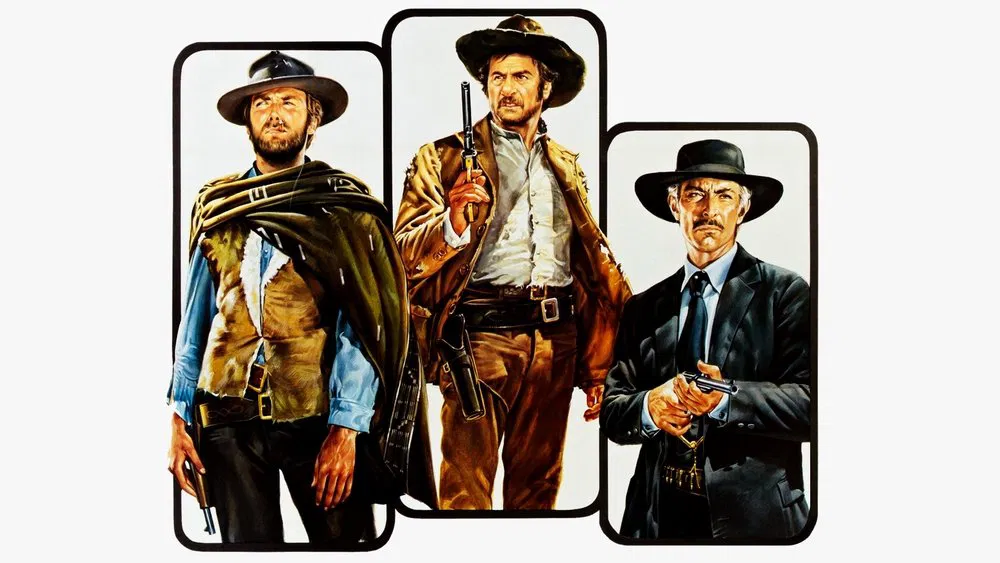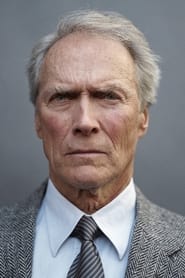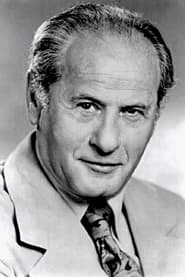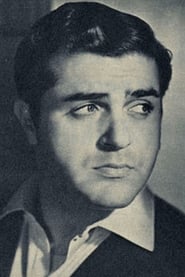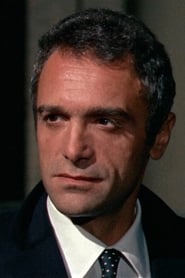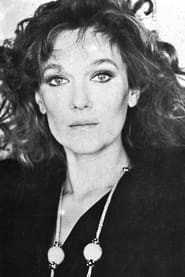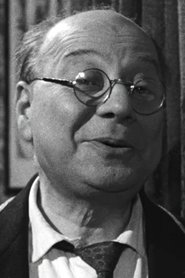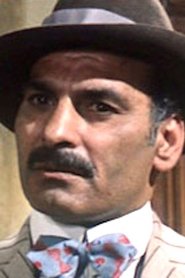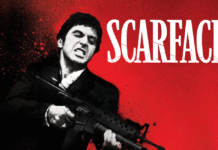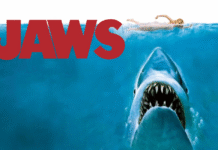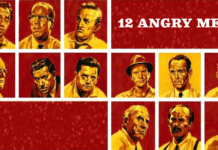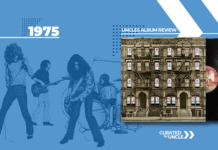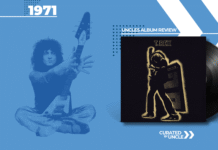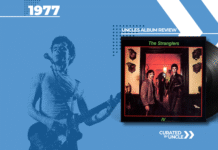The Good, the Bad and the Ugly (1966): A Dirty, Sweaty Masterpiece with Guns Greed and Glorious Staring Contests
If The Good, the Bad and the Ugly were a person, it’d be that one bloke in the pub who doesn’t say much, but when he does, everyone shuts up and listens – mostly because he might be packing heat.
Released in 1966, directed by Sergio Leone and soundtracked by Ennio Morricone, this isn’t just a Western. It’s the Western. The one with the cigar-chomping iconography, the slow zooms and enough dramatic pauses to make a sloth look like it’s in a rush.
Table of Contents
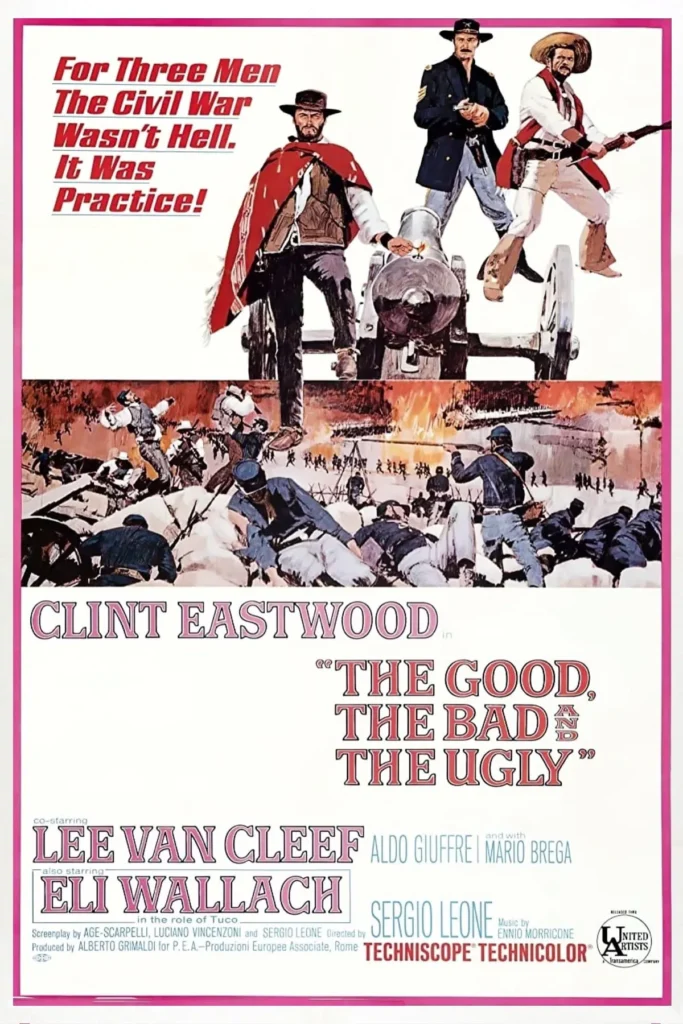
The Plot: Three Bastards and a Funeral (of Morality)
Let’s not get fancy, this film is basically:
- The Good – Blondie (Clint Eastwood), a bounty hunter who’s only “good” because he shoots slightly fewer people in the back.
- The Bad – Angel Eyes (Lee Van Cleef), a cold-blooded killer who wears eyeliner sharper than his cheekbones.
- The Ugly – Tuco (Eli Wallach), a bandit with the survival instincts of a cockroach and the charisma of a sweaty raccoon.
They’re all chasing $200,000 in stolen Confederate gold during the American Civil War, because nothing says high-stakes drama like risking your life for the currency of a doomed government.
There are double-crosses, accidental alliances and more staring than a budget optical exam.
Direction: Leone’s Operatic Slow Burn of Doom
Sergio Leone directs like a sadistic conductor, building tension note by agonising note until your bladder gives out from suspense. He turns the Western into a mythic, sweaty morality play, where every blink is loaded with doom and every gunshot echoes like the voice of God slamming a door.
He does more with a close-up of an eyebrow than most directors do with a crane shot and $100 million.
The pacing? Glacial. The reward? Cinematic euphoria, assuming you’re patient enough to not chew your own leg off waiting for the next scene.
The Characters: Not a Hero Among Them
Let’s get one thing straight: nobody in this film is “good” in any meaningful way. It’s like calling a hangover “mildly inconvenient.”
Blondie (Clint Eastwood):
The cowboy equivalent of a tax auditor, efficient, emotionally distant and likely to ruin your day with a bullet. Eastwood spends the film squinting into the sun like it owes him money and saying more with a grunt than most actors do in an entire monologue.
Angel Eyes (Lee Van Cleef):
A professional killer who wears black like it’s his soul’s preferred uniform. He’s methodical, lethal and the kind of man who probably irons his poncho. He doesn’t smile—he curves menace.
Tuco (Eli Wallach):
The heart of the film, somehow. A scumbag with a mouth that never shuts and a survival instinct that could outlive nuclear winter. He’s funny, despicable, occasionally pathetic and oddly relatable – if you’ve ever dodged rent or eaten beans from a can.
The Setting: America, But Everyone’s Italian
Despite being set during the American Civil War, this movie is about as American as espresso. Shot mostly in Spain with Italian actors and a budget that could barely buy a horse, The Good, the Bad and the Ugly invented the spaghetti Western genre, proving you don’t need historical accuracy when you’ve got ponchos, pistols and painfully dramatic pauses.
The desert is less a backdrop and more a fourth character: dry, harsh and unforgiving – just like every relationship in this film.
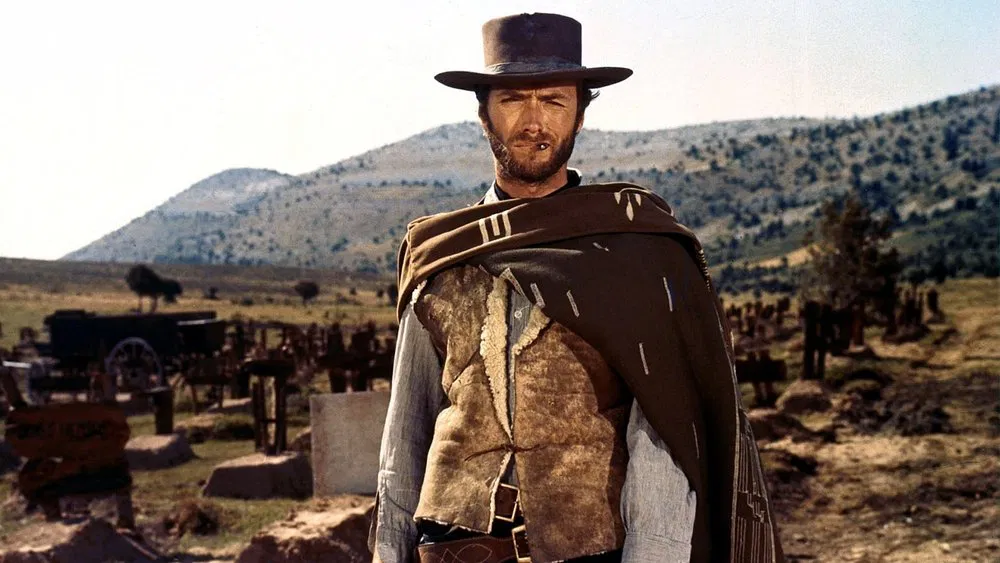
Music: Ennio Morricone’s Auditory Black Magic
The “Aah-ee-aah-ee-aah… Wah WAH wah” theme is the reason why people still pretend they can whistle.
Morricone’s score is legendary. It doesn’t just support the film—it drives it, haunts it, and occasionally punches you in the emotional face. The soundtrack turns every standoff into an operatic ballet of death and testosterone.
The final “Ecstasy of Gold” sequence is a music video for existential dread. It’s what your soul hears when you’ve lost your car keys in a desert during an acid trip.
Themes: Greed, Death and Pointless Civil War
Sure, it’s a Western. But this film is also a meditation on greed, betrayal and the utter absurdity of war. While our three anti-heroes squabble over gold, the Civil War rages in the background like some horribly ironic joke about human suffering.
Leone doesn’t glorify war, he mocks it. The soldiers are drunks. The generals are disillusioned. And the battles? Bloody, tragic and utterly pointless.
At one point, Tuco and Blondie blow up a bridge – not because of strategy, but just to stop the senseless fighting. It’s the cinematic equivalent of flipping the table in disgust at the world’s stupidity.
The Final Standoff: Staring Into the Void
The last ten minutes of this film should be studied in film school, philosophy departments and possibly therapy. Three men. One grave. Guns loaded. Music blaring.
For nearly three minutes, no one speaks. They just stare at each other like they’re playing an intense game of Don’t Blink or Die. It’s cinematic foreplay before someone finally pulls the trigger and when they do, it feels earned.
Leone crafts tension so thick you could butter toast with it.
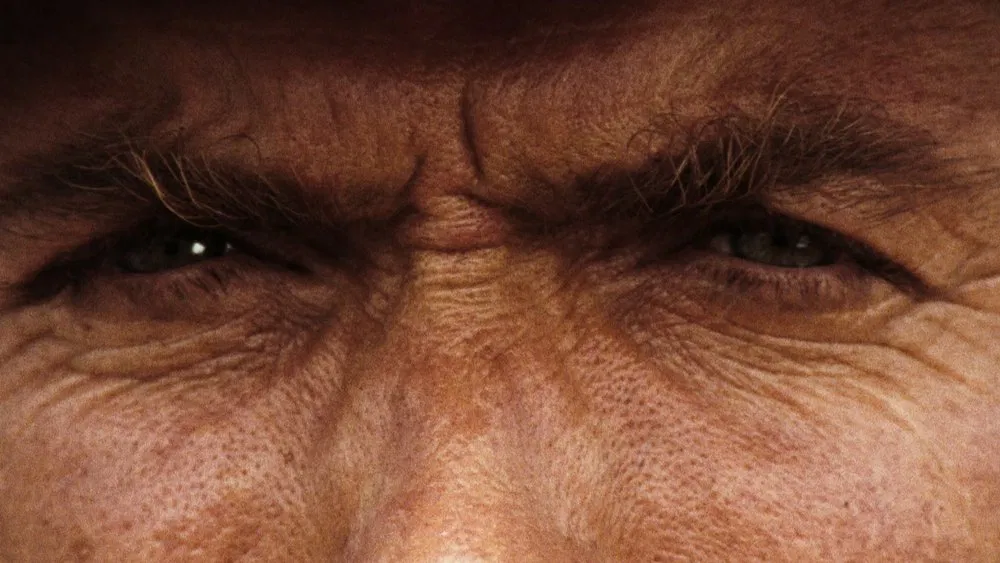
Legacy: The Blueprint for Cool
Without this film, there’s no Tarantino, no Breaking Bad, and certainly no modern Westerns that dare to be both violent and existentially hilarious. The Good, the Bad and the Ugly redefined how movies could look, feel and shoot you in the heart metaphorically (and literally).
Its influence is so vast that even people who’ve never seen it can hum the theme and quote the title. It’s the pop culture equivalent of a cockroach: indestructible, iconic and not going anywhere.
Recommended If You Like:
- Clint Eastwood before he started yelling at chairs
- Moral ambiguity in widescreen
- Music that makes you feel like you’re about to duel Death
- Men who don’t talk much but still kill you
- Bleak landscapes and bleaker worldviews
My Final Thoughts: 5 Outlaws, 4 Bullets, 3 Eyebrows Raised and One Glorious Standoff
It’s long. It’s slow. It’s dustier than a pensioner’s attic. But The Good, the Bad and the Ugly is also a cinematic treasure. It’s an existential epic about greed, death and what happens when three morally bankrupt lunatics chase buried gold in a world that’s already crumbling.
If you haven’t seen it, you’re culturally bankrupt. If you have seen it, watch it again—preferably with a poncho and a thousand-yard stare.
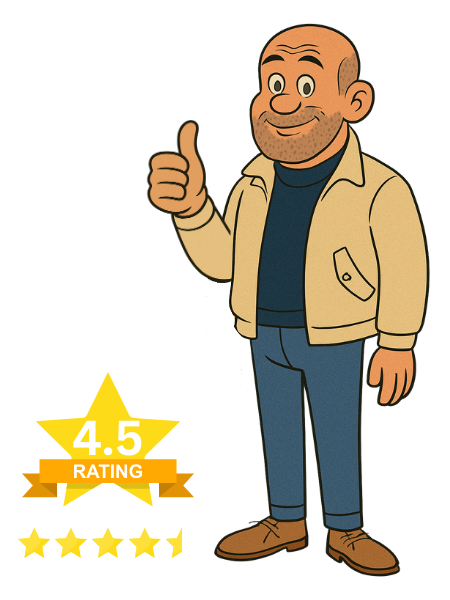
If You Like The Good, The Bad And The Ugly, I Recommend These Movies:
Once Upon a Time in the West (1968) – Like The Good, the Bad and the Ugly on a grander scale, with more dust and deadly stares.
For a Few Dollars More (1965) – The middle child of the trilogy, still cooler than most films’ eldest siblings.
Django (1966) – Imagine Clint Eastwood’s grimmer cousin dragging a coffin full of chaos through the mud.
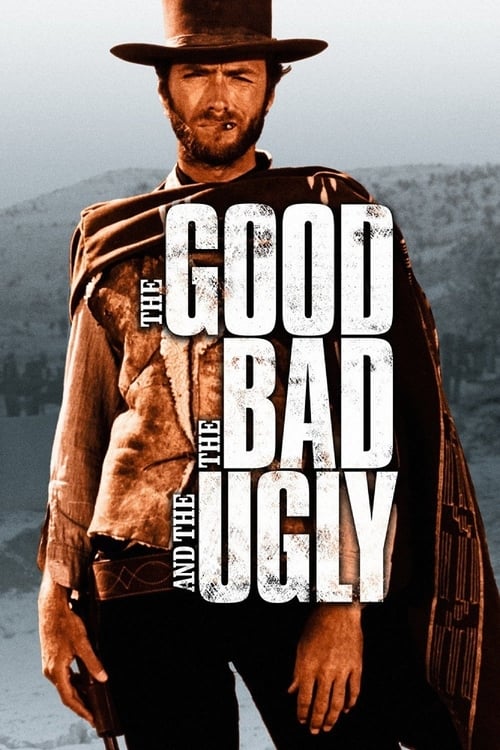
The Good, the Bad and the Ugly
Blondie
Tuco Ramirez
Sentenza / Angel Eyes
Alcoholic Union Captain
Father Pablo Ramirez
Maria
Storekeeper
Tuco Henchman



